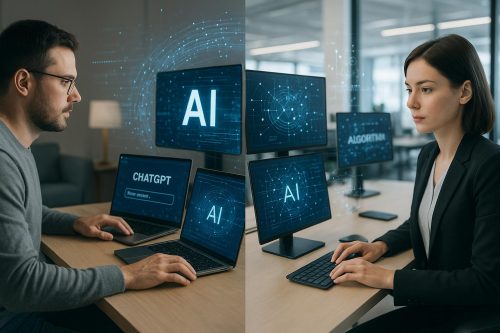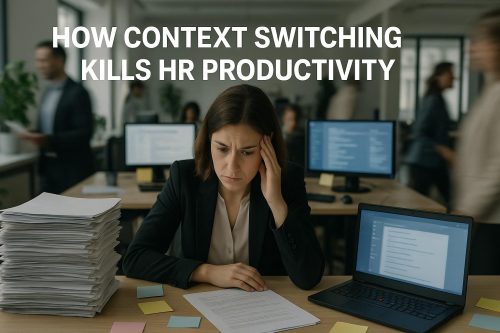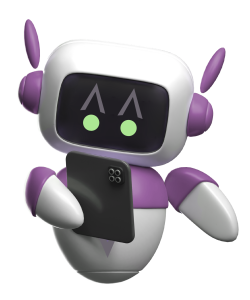Whispers of AI replacing labor are growing louder. It’s no longer a futuristic fantasy; it’s becoming reality. This raises tough questions about the future of work and potential industry transformations. Even simple tasks, like calendar scheduling and data entry, are now performed by bots, changing how we humans fit into this evolving picture.
This article discusses the angst, reality, and potential upside of AI’s growing role in the job market. It will explore potential job losses and how some workers are more exposed to job cuts than others.
The Alchemy of the Modern Age: Software as Labor
Alchemy, the dream of turning lead into gold, captivated scientists for centuries. Modern AI sparks a new form of alchemy: transforming capital into labor through software development.
This transformation involves investments in resources like skilled engineers, GPUs, and infrastructure. The resulting code becomes digital labor, impacting white-collar workers and software markets. It also creates opportunities where traditional pricing models no longer limit growth. Businesses gain access to solutions previously unavailable due to traditional software constraints, potentially boosting economic growth.
From Filing Cabinets to Algorithms: The Digitization of Work
Traditional software digitized physical processes, but business headcount remained relatively constant. Early cloud software mimicked physical storage, like filing cabinets, moving data into databases. Software companies developed front-ends to automate human tasks. For instance, HR departments moved from physical files managed by clerks to digital systems.
Often, IT professionals managed these systems, maintaining access and control. However, overall employee numbers didn’t significantly change. A key example is enterprise software like Zendesk for support departments. It digitized support tickets, transitioning from paper to digital.
Similar digital transformations happened in accounting and sales with companies such as QuickBooks and Salesforce adopting advanced digital tools. Today’s systems analyze data, reducing the need for human intervention.
| Company | Digitization Target |
|---|---|
| Workday | HR Personnel Records |
| Zendesk | Support Tickets |
| Quickbooks | Financial Ledgers |
| Epic/Cerner | Health Records |
| HubSpot | Customer Intelligence |
| Salesforce | Sales Pipeline |
This evolution highlights the role of natural language processing, enabling machines to perform key tasks previously requiring human language skills. This also changes the skills needed in administrative support staff and other service roles.
AI Replacing Labor: The Shift in the Job Market
What does this shift mean for job security? While widespread job losses might not be immediate, many jobs could become fully automated within the next decade. Customer service roles are already undergoing disruption. Jobs with repetitive tasks and data analysis, where computers excel, are vulnerable to generative AI and machine learning algorithms. Software development roles also might be replaced through more sophisticated machine learning as we head toward a new AI era.
Other jobs vulnerable to AI technology include:
- Car and truck driver.
- Computer programmer.
- Research analyst.
- Paralegal.
- Factory or warehouse worker.
- Financial trader.
- Travel advisor.
- Content writer (in some cases).
- Graphic designer.
Recent statistics on jobs being replaced by AI indicate shifts in fields like content writing due to gen AI tools. Many content writers are looking for ways to adopt AI while retraining themselves in this new, competitive landscape where content mills become easier to automate and content writers are becoming replaced by generative AI in high volumes. This begs the question if human writers and editors still play a critical role as AI is adopted more widely across a growing variety of professions. It’s likely that certain professions involving complex reasoning will likely be replaced while those who perform key tasks with human elements requiring human touch, high EQ (emotional intelligence) and soft skills, and the human element are less likely to see an immediate impact. The need to be flexible is key and adopting and retraining will benefit younger and older workers across high-income countries, advanced economies, and emerging markets.
Studies comparing job listings before and after widespread gen AI availability show significant impacts on some sectors, like content writing.
The Rise of the AI-Powered Enterprise
This new AI alchemy creates compelling investment opportunities and changes business dynamics. Software markets once considered niche have expanded due to AI capabilities in traditionally human-driven fields. Low-income countries may feel less of an impact at first while developed nations see a big shift.
FAQs about AI Replacing Labor
Is AI replacing human labor?
AI is automating specific tasks, primarily repetitive, data-driven work. However, full replacement is less likely than job transformation where AI augments human capabilities. For jobs involving human connection, such as teaching and nursing, these professions will likely remain human-centric. However, AI has the potential to transform those fields in ways where teachers are augmented through AI to enhance education. Similar impacts can occur for many social roles within an advanced digital workforce that transforms jobs AI does well in repetitive jobs into those that help support workers where AI falls short, or is less ideal than a human worker.
What jobs is AI replacing right now?
Currently, AI impacts roles like customer service representatives, data entry clerks, and some content creation and analysis jobs. (See the list above for more specific examples.) High school-aged children may need to focus on developing new skills where workers use AI as a collaborative partner instead of a competitor in the new job market.
What jobs are being replaced due to AI?
Jobs with repetitive tasks or heavy data analysis, such as customer service representatives and financial analysts, face AI-driven changes. This begs the question how humans fit into a future where traditional roles and even complex tasks that used to be uniquely performed by a human might be replaced or augmented by generative AI in the global economy where jobs might be at risk across global employment numbers. For additional information, explore resources like, “AI is replacing human tasks faster than you think” and, ” AI isn’t likely to replace humans at work, says report—but 5 occupations may soon feel its impact more .” AI is partially automating some jobs and completely replacing others. Consider also this informative resource discussing how AI replaces and creates jobs .
How will AI change the labor market?
While some fear mass unemployment, economists don’t anticipate immediate widespread job loss. AI chatbots assist with customer service and financial advice, but human interaction still holds value for “trust and intimacy,” as highlighted in this article on AI’s impact on jobs.
Human teachers and nurses remain crucial for meaningful interactions and “bedside manner,” respectively, aspects AI currently lacks. Instead of elimination, jobs will be redesigned, emphasizing higher-level strategic and creative roles while AI manages repetitive tasks and research. While human workers are valuable where social interactions, emotional support, and nuanced conversations occur, over time the shift could affect a significant portion of all jobs. Some workers in advanced economies may be replaced faster than those with jobs involving direct interactions, emotional intelligence, and a need for human connection. Companies don’t want to eliminate all people work though because certain job functions are likely better off being performed by people even as AI automation improves over time. The impact on the global workforce is far-reaching and includes retraining programs for workers exposed to job losses as industries transform into an AI job environment that includes customer service and support roles, customer service reps, and similar social positions where it would be difficult or expensive to maintain. A strong social safety net and investment into new roles in education and training, especially soft skills and retraining in the global workforce will be needed over time. These changes might impact 26-60% of jobs in the global employment space across both advanced economies and emerging markets.
Conclusion
AI replacing labor isn’t an overnight robot takeover. It’s an evolution like past technological advancements. As with the Industrial Revolution and the internet, fears exist but change often creates new opportunities if people adapt. Although some jobs are certainly being lost today due to advances in AI technology where those workers are more exposed to potential job losses through cuts in administrative support and more routine jobs where machine learning and algorithms can replace workers with the assistance of administrative IT support staff. Many older workers are less comfortable adapting and AI tools adoption requires companies to retrain and invest in the social safety net.
Instead of complete replacement, AI augments human work, creating a collaborative environment where jobs involve more collaborative AI tools to increase productivity and possibly free up some time where work life balance can improve if those workers can adapt to these changes while focusing on uniquely human characteristics such as those related to trust, safety, and empathy. Strategic retraining and open mindsets help workers use AI tools to navigate changing times in the job market.






